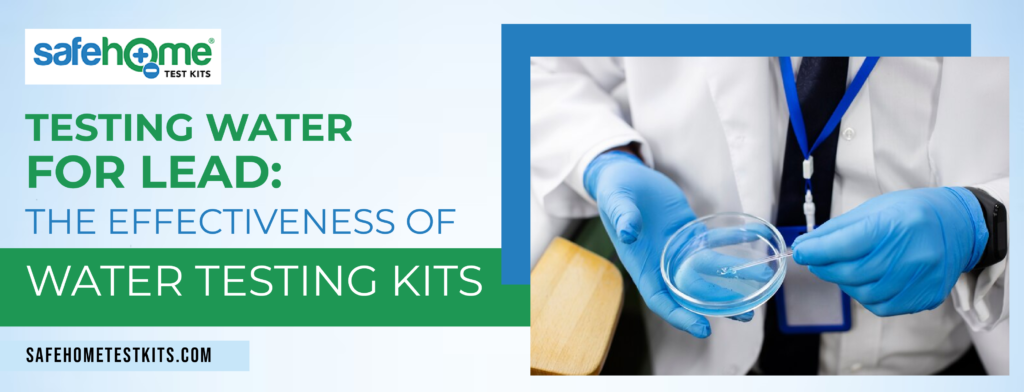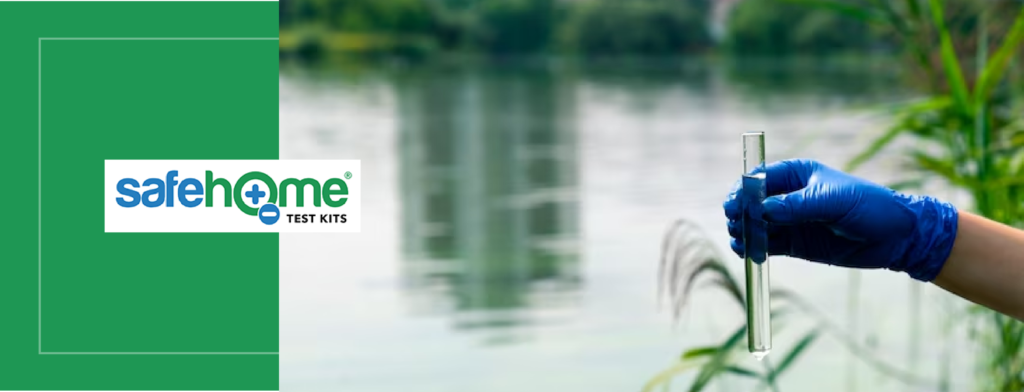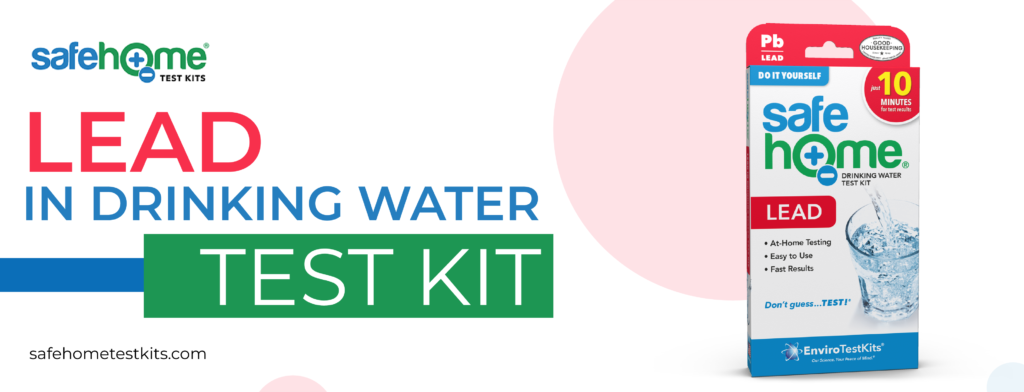Testing Water for Lead: The Effectiveness of Water Testing Kits

Lead contamination in drinking water poses severe health risks, making regular testing crucial for ensuring water safety. Water testing kits have become popular tools for homeowners to assess lead levels conveniently. This blog explores the effectiveness of these kits, shedding light on their accuracy, ease of use, and the importance of testing for lead in residential water sources.
Understanding the Threat: The Dangers of Lead in Drinking Water
Health Risks Associated with Lead Exposure
Lead exposure, even in trace amounts, can lead to severe health issues, especially in children and pregnant women. Cognitive impairment, developmental delays, and neurological problems are among the risks associated with lead-contaminated water consumption.
Common Sources of Lead Contamination
Lead can enter drinking water through corroded pipes, plumbing fixtures, and lead solder used in older plumbing systems. Homes built before 1986 are more likely to have lead pipes, emphasizing the importance of regular testing, especially in older residences.
The Rise of Water Testing Kits
Convenient Solution for Homeowners
Water testing kits have gained popularity as an accessible and cost-effective solution for homeowners concerned about lead contamination. These kits provide an initial assessment, allowing individuals to take proactive measures to address potential issues.
Different Types of Water Testing Kits
DIY Strip Tests:
Pros: Affordable, quick results.
Cons: Limited accuracy, may not detect low lead levels.
Mail-In Kits:
Pros: Comprehensive analysis, professional laboratory testing.
Cons: Longer turnaround time, higher cost.
Digital Testing Devices:
Pros: Real-time results, user-friendly.
Cons: Higher initial cost, may require calibration.

Assessing Accuracy
Ensuring the accuracy of water testing results is paramount for making informed decisions about water safety. Several factors play a crucial role in determining the reliability of testing kits.
1. Sampling Method: Ensuring Precision in Collection
Proper sampling is the cornerstone of accurate water testing. The way a water sample is collected directly impacts the reliability of the results. Water testing kits come with specific instructions detailing the correct sampling procedure. It’s imperative to follow these guidelines meticulously to obtain a representative water sample.
Technique Matters:
Adopting the right technique, such as allowing the water to flow for a few minutes before collecting the sample, helps eliminate initial stagnation in the pipes, ensuring that the sample accurately reflects the water quality.
Sample Location:
Choosing the sample location strategically is also crucial. Collecting water from the kitchen tap, where most drinking water is sourced, provides a more accurate representation of the water quality consumed by household members.
Avoiding Contamination:
Contamination from external sources can skew results. Ensuring that the collection container is clean and free from residues, and avoiding contact between the container and potentially contaminated surfaces, is essential for accurate testing.
2. Testing Sensitivity: Identifying Low Lead Levels
The sensitivity of a testing kit refers to its ability to detect low concentrations of lead in water accurately. Kits with lower detection limits are more effective in identifying even minute amounts of lead, providing a more comprehensive understanding of water quality.
Understanding Detection Limits:
Detection limits are usually expressed in parts per billion (ppb). Kits with lower ppb thresholds can identify trace amounts of lead, crucial for assessing water safety, especially in areas where lead levels may be close to regulatory limits.
Comprehensive Analysis:
For a holistic understanding of water quality, it’s advisable to choose testing kits that offer a wide detection range. This ensures that the kit can identify both high and low lead levels, providing a thorough assessment of the water’s safety.
3. Laboratory Validation: The Gold Standard for Accuracy
While DIY strip tests are convenient, they may lack the precision offered by professional laboratory analysis. Mail-in kits that include laboratory validation generally provide more accurate results compared to DIY strip tests.
Professional Expertise:
Laboratory analysis involves trained professionals using advanced equipment to analyze water samples. This expertise ensures accurate identification of lead levels, offering a higher level of confidence in the results.
Higher Accuracy Assurance:
The rigorous processes employed in professional laboratories significantly reduce the margin of error, providing users with results that are not only accurate but also reliable for making informed decisions about water quality.
Complex Analysis:
Some contaminants may not be detectable through visual indicators alone. Laboratory analysis can identify a broader range of impurities, contributing to a more thorough assessment of water quality beyond just lead levels.
Ease of Use
DIY Strip Tests: Simplicity with Limitations
DIY strip tests are user-friendly, involving simple steps like dipping the strip into the water sample. However, their ease of use is often accompanied by limitations in accuracy, making them suitable for initial screening rather than comprehensive testing.
Mail-In Kits: Balancing Convenience and Accuracy
Mail-in kits strike a balance between convenience and accuracy. They typically include detailed instructions for sample collection and return. Users benefit from the simplicity of sample collection combined with the precision of professional laboratory analysis.
Digital Testing Devices: User-Friendly Technology
Digital testing devices offer a modern and user-friendly approach to water testing. With features like real-time results and easy-to-read displays, these devices simplify the testing process. However, users should follow calibration guidelines to ensure accuracy.
Interpreting Results
Understanding Lead Levels
Water testing kits provide results in terms of lead concentration, often measured in parts per billion (ppb). Understanding these measurements is crucial for assessing the severity of lead contamination and determining appropriate remediation measures.
Comparison with Regulatory Standards
Compare test results with local and national regulatory standards for lead in drinking water. The Environmental Protection Agency (EPA) sets a Maximum Contaminant Level (MCL) of 15 ppb for lead in public water systems, offering a benchmark for evaluating the safety of residential water sources.
Taking Action
Remediation Strategies
Water Filtration:
Install water filtration systems certified for lead removal, such as activated carbon filters.
Pipe Replacement:
If lead pipes are identified, consider replacing them with safer materials, like copper or PEX.
Flushing Water:
Run cold water for a few minutes before use, especially if water has been stagnant in the pipes.
Regular Testing:
Implement a routine testing schedule to monitor lead levels and ensure ongoing water safety.

Safe Home® Lead in Drinking Water Test Kit – Confidence in Every Drop
Safeguard your family’s health with the Lead in Drinking Water Test Kit by Safe Home®, a groundbreaking DIY solution. Offering unparalleled sensitivity, it detects Lead levels as low as 3.8 parts per billion (ppb), setting a new standard for at-home water testing. In just 10 minutes, this user-friendly kit provides clear and visible results, focusing on dissolved Lead in your drinking water.
What sets Safe Home® apart is its exclusive recognition with the Good Housekeeping Seal, a mark of superior quality and effectiveness. The kit’s ultra-sensitive testing ensures peace of mind, detecting trace amounts of Lead that might go unnoticed with other kits. Designed for simplicity, it delivers rapid results, making it the best at-home Lead water test kit available.
Your family’s well-being is paramount, and Safe Home® prioritizes safety first. The Good Housekeeping Seal further guarantees the reliability of this easy-to-use kit. Take proactive steps to protect your loved ones with us – the trusted choice for Lead in drinking water testing. Don’t wait; ensure your water is Lead-free today and enjoy the confidence that comes with the best.
Bottom Line
Testing water for lead using water testing kits is a practical step in safeguarding public health. While DIY strip tests offer quick insights, mail-in kits and digital testing devices provide a more comprehensive analysis. Accuracy depends on factors such as sampling method, testing sensitivity, and laboratory validation. Interpreting results in the context of regulatory standards is crucial for determining the severity of lead contamination. Taking prompt action, whether through water filtration, pipe replacement, or regular testing, is vital for ensuring access to clean and safe drinking water. Water testing kits empower homeowners to proactively address lead contamination, contributing to the overall well-being of communities.


